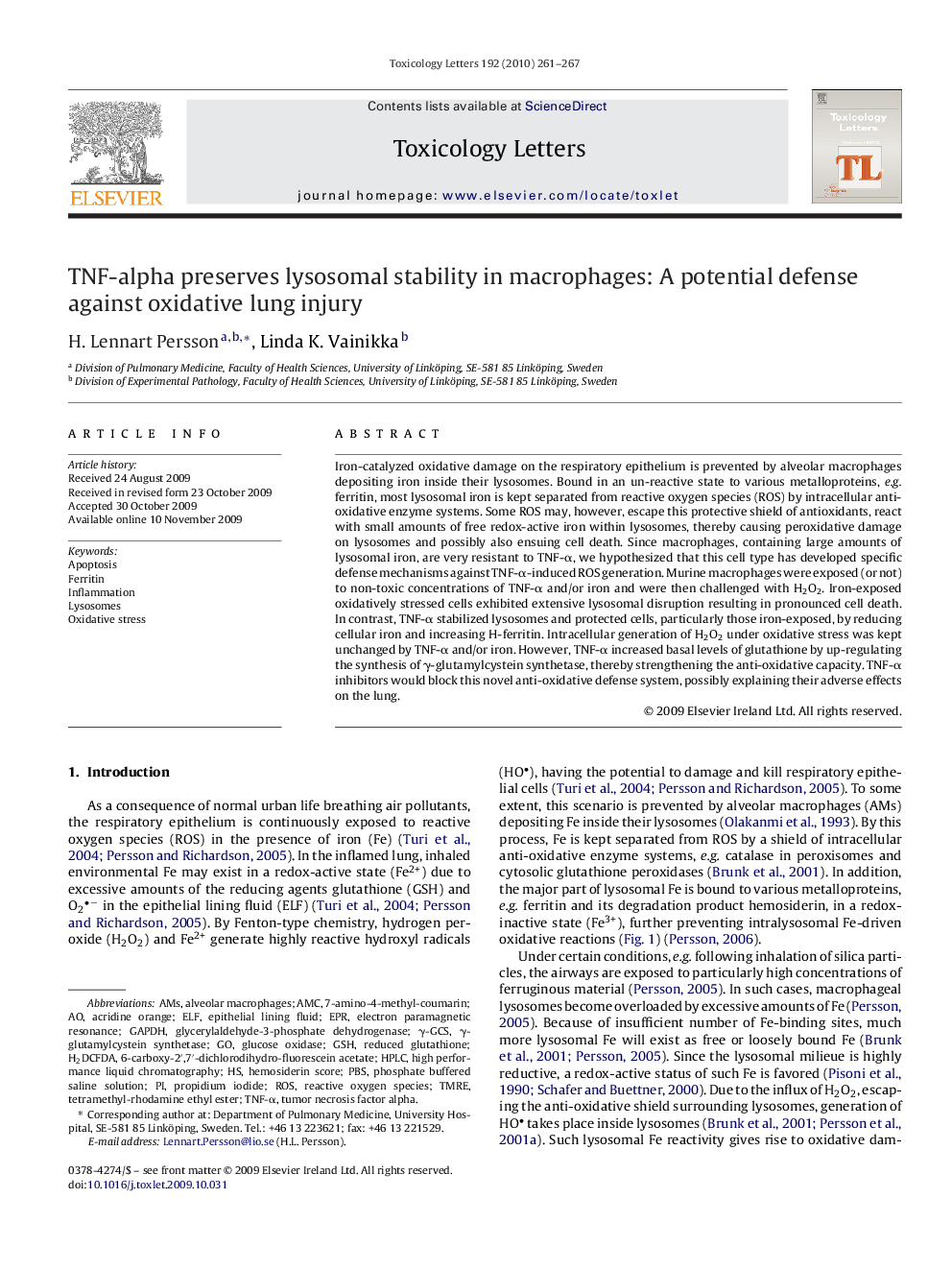| Article ID | Journal | Published Year | Pages | File Type |
|---|---|---|---|---|
| 2600690 | Toxicology Letters | 2010 | 7 Pages |
Iron-catalyzed oxidative damage on the respiratory epithelium is prevented by alveolar macrophages depositing iron inside their lysosomes. Bound in an un-reactive state to various metalloproteins, e.g. ferritin, most lysosomal iron is kept separated from reactive oxygen species (ROS) by intracellular anti-oxidative enzyme systems. Some ROS may, however, escape this protective shield of antioxidants, react with small amounts of free redox-active iron within lysosomes, thereby causing peroxidative damage on lysosomes and possibly also ensuing cell death. Since macrophages, containing large amounts of lysosomal iron, are very resistant to TNF-α, we hypothesized that this cell type has developed specific defense mechanisms against TNF-α-induced ROS generation. Murine macrophages were exposed (or not) to non-toxic concentrations of TNF-α and/or iron and were then challenged with H2O2. Iron-exposed oxidatively stressed cells exhibited extensive lysosomal disruption resulting in pronounced cell death. In contrast, TNF-α stabilized lysosomes and protected cells, particularly those iron-exposed, by reducing cellular iron and increasing H-ferritin. Intracellular generation of H2O2 under oxidative stress was kept unchanged by TNF-α and/or iron. However, TNF-α increased basal levels of glutathione by up-regulating the synthesis of γ-glutamylcystein synthetase, thereby strengthening the anti-oxidative capacity. TNF-α inhibitors would block this novel anti-oxidative defense system, possibly explaining their adverse effects on the lung.
